History in
Scandinavia
Buildings & Runestones
Buildings & Runestones
All imagess are
copyright Randy or Ann Asplund
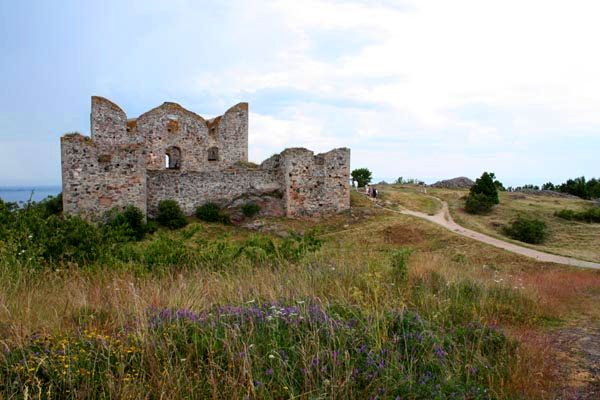
Brahehus Castle: A ruin overlooking Lake Vättern in Sweden. From here the view looking out over the lake can
make you wonder how this beautiful site could be abandoned. It was built as a strong manor house for Count
Per Brahe the Younger in the 1640's and once stood tall with towers like a medieval fortress. But it was built for
comfort, but tragically was lost when it burned in 1708.
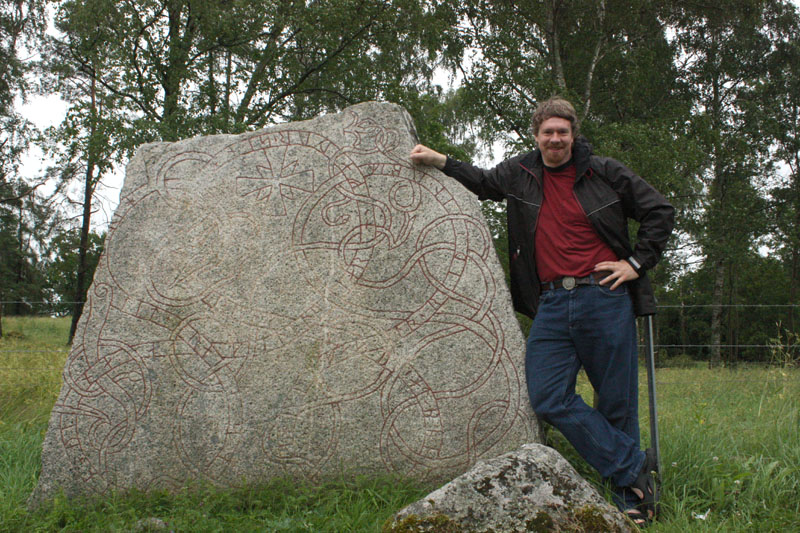
This is me on Runestone safari in Uppland, Sweden. They seem to grow wild in the countryside. Some arein the walls of churches, and some have been
moved to museum settings, but many remain where they were made.
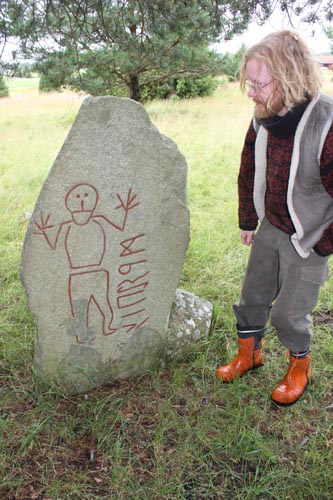
Our friend Pere pulled over on the roadside and we wandered into
a cowfield and up a small hill. There we found the Krogsta Runestone,
which is the oldes runestone known. The inscription is an early Norse
that has not been translated.
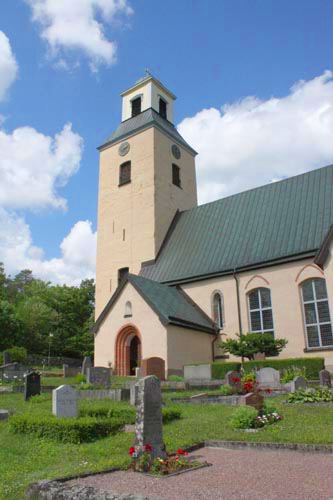
The medieval Rasbo Kyrka (Church) near Uppsala, Sweden
has a viking Runestones in the entry hall.
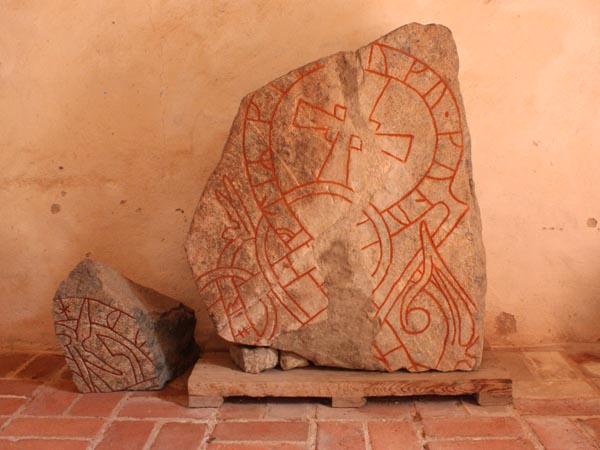
Runestone fragments inside Rasbo kyrka hallway, Uppland, Sweden
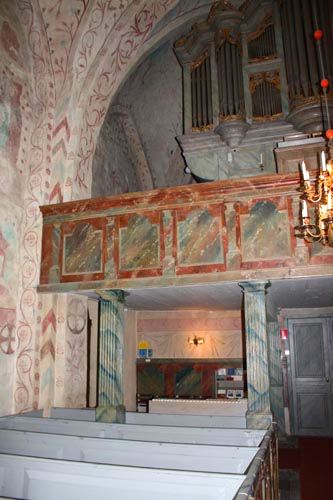
Inside Rasbo Kyrka the walls and cieling are covered in biblical
drawings made in the renaissance with red, blue, yellow and
green paint.
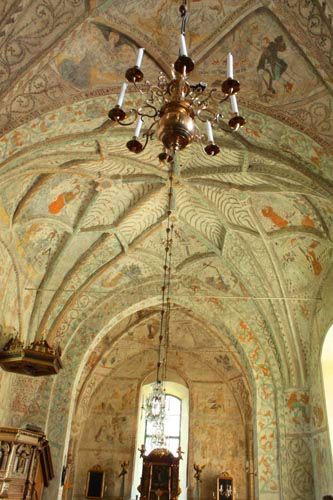
We think of ancient churches as dark, with bright stained-glass
windows, but in Rasbokil Kyrka we see a very bright interior
that has been lavishly painted. Rasbokil is nor Rasbo.
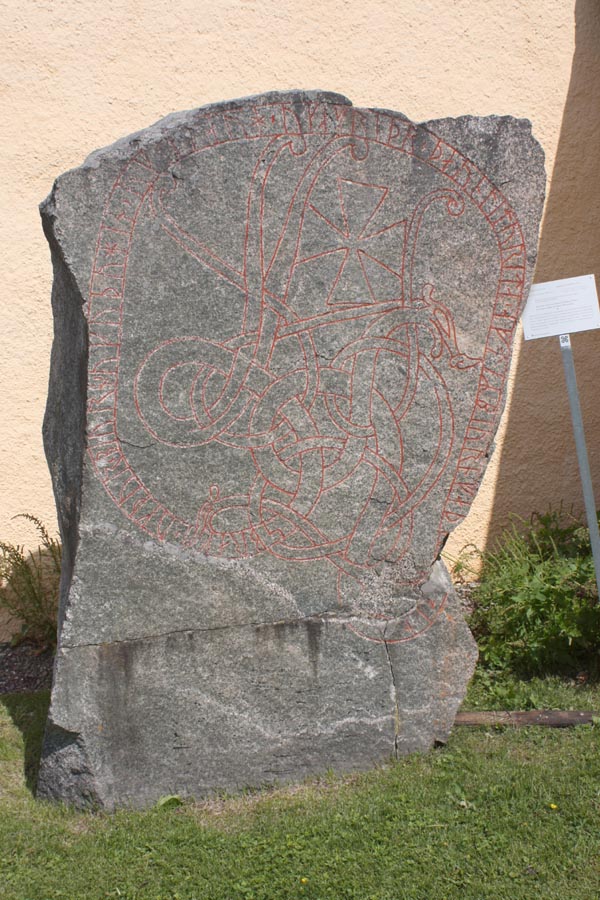
Outside of the Rasbokil kryka is an older runestone. Uppland, Sweden
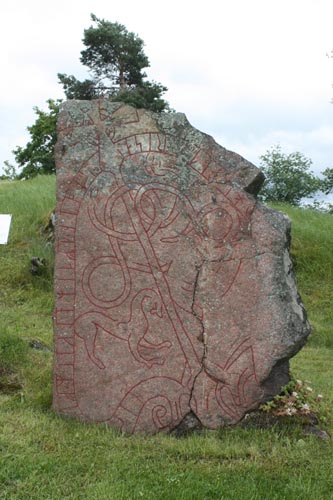
The Tuna Runestone sits out in a field in Uppland where it has
rested since the 11th century. It keeps company with cows and
the goats across the street.
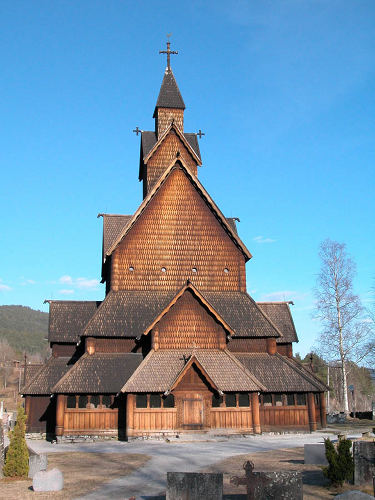
Heddal Stave Church in Norway, ca. 1200 AD
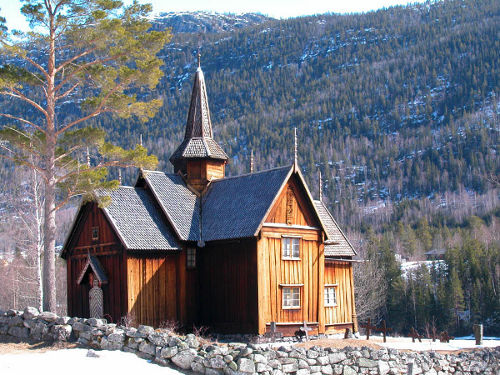
Nore Stave church, Norway, 1167 AD.
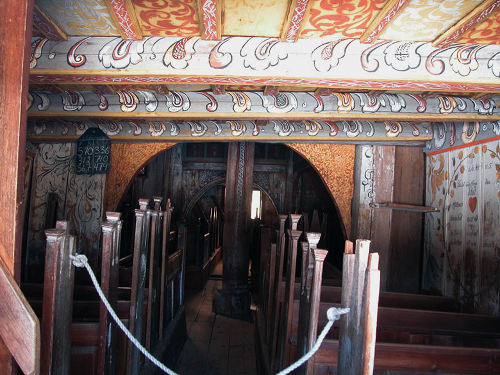
Inside the Nore Stave Church
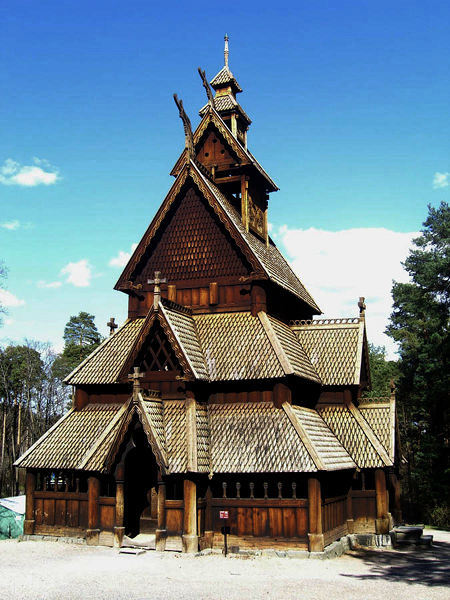
The Stave Church of Gol dates from 1212 AD. It is one of the most impressive wooden
buildings I've ever seen. It was going to be demolished in about 1880 by the people of
Gol who wanted a new building! It was saved by King Oscar II and moved to a hilltop
at the Museum of Cultural History in Oslo, Norway.
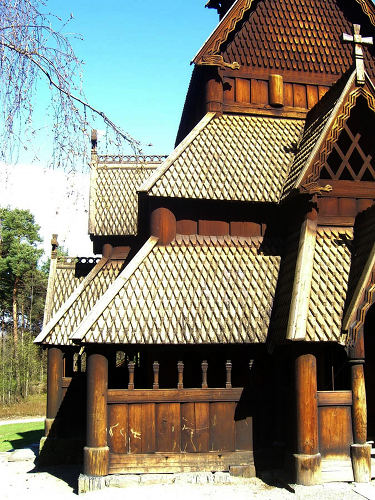
The Gol stave church is a beautiful blend of Romanesque and ancient
scandinavian art forms. You'll see Romanesque dragons and gargoyles
with intricate viking style knotwork.
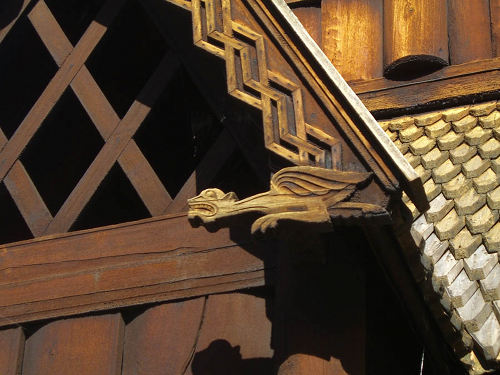
A Romanesque carving above the door. Note the thick wooden shingles.
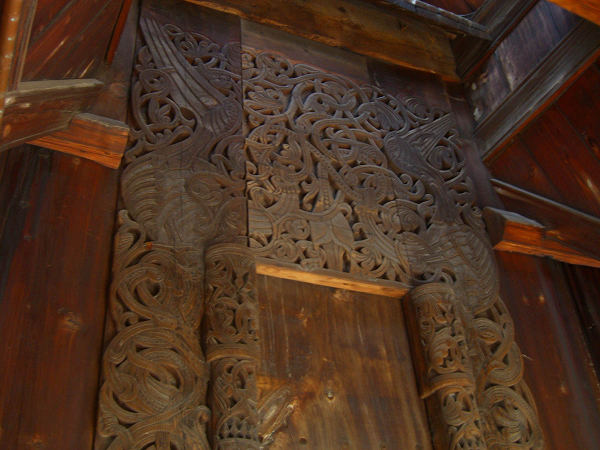
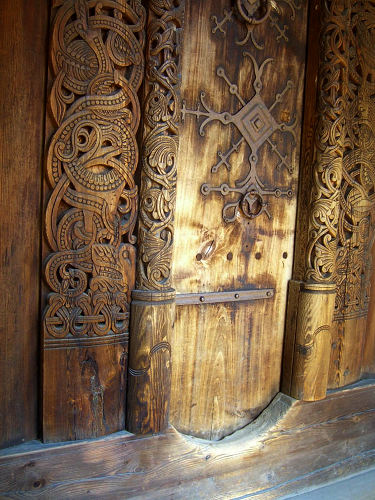
The entrance to the Gol Church
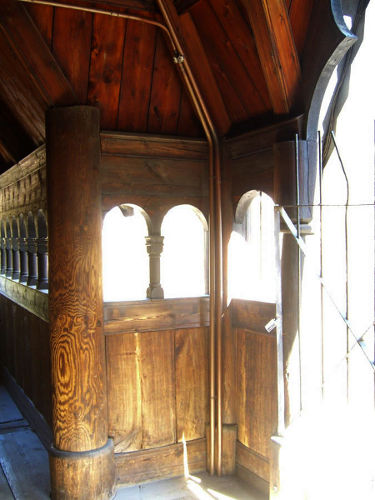
Turning around a bit we see the inside of the gallery that winds
around the building.
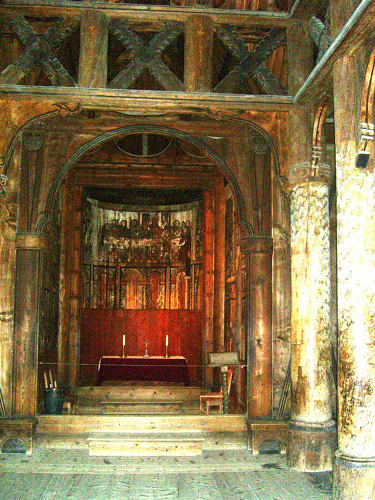
Inside the Gol Sstave church
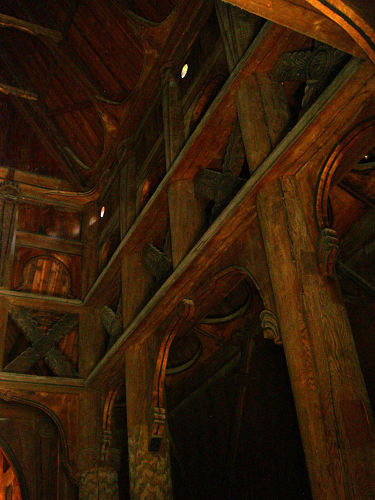
Looking up at the superstructure
|
Scandinavia has a surprising richness of history available and
accessible to the visitor. In general, the sites are very easy to see
and photograph, and so are the museums. This page is a work in progress
and we will start with some ancient buildings in Norway and Sweden, and
some ancient Runestones. Eventually I will add other pages, but for
now, please enjoy what I have! |

Brahehus Castle: A ruin overlooking Lake Vättern in Sweden. From here the view looking out over the lake can
make you wonder how this beautiful site could be abandoned. It was built as a strong manor house for Count
Per Brahe the Younger in the 1640's and once stood tall with towers like a medieval fortress. But it was built for
comfort, but tragically was lost when it burned in 1708.

This is me on Runestone safari in Uppland, Sweden. They seem to grow wild in the countryside. Some arein the walls of churches, and some have been
moved to museum settings, but many remain where they were made.

Our friend Pere pulled over on the roadside and we wandered into
a cowfield and up a small hill. There we found the Krogsta Runestone,
which is the oldes runestone known. The inscription is an early Norse
that has not been translated.

The medieval Rasbo Kyrka (Church) near Uppsala, Sweden
has a viking Runestones in the entry hall.

Runestone fragments inside Rasbo kyrka hallway, Uppland, Sweden

Inside Rasbo Kyrka the walls and cieling are covered in biblical
drawings made in the renaissance with red, blue, yellow and
green paint.

We think of ancient churches as dark, with bright stained-glass
windows, but in Rasbokil Kyrka we see a very bright interior
that has been lavishly painted. Rasbokil is nor Rasbo.

Outside of the Rasbokil kryka is an older runestone. Uppland, Sweden

The Tuna Runestone sits out in a field in Uppland where it has
rested since the 11th century. It keeps company with cows and
the goats across the street.

Heddal Stave Church in Norway, ca. 1200 AD

Nore Stave church, Norway, 1167 AD.

Inside the Nore Stave Church

The Stave Church of Gol dates from 1212 AD. It is one of the most impressive wooden
buildings I've ever seen. It was going to be demolished in about 1880 by the people of
Gol who wanted a new building! It was saved by King Oscar II and moved to a hilltop
at the Museum of Cultural History in Oslo, Norway.

The Gol stave church is a beautiful blend of Romanesque and ancient
scandinavian art forms. You'll see Romanesque dragons and gargoyles
with intricate viking style knotwork.

A Romanesque carving above the door. Note the thick wooden shingles.


The entrance to the Gol Church

Turning around a bit we see the inside of the gallery that winds
around the building.

Inside the Gol Sstave church

Looking up at the superstructure